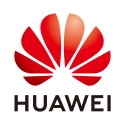Huawei DQ ODN Solution Won the All-Optical Deployment Solution Innovation Award at the Lightwave Innovation Reviews
Recently, Lightwave, a media organization covering the global optical network industry, announced the 2023 Lightwave Innovation Reviews Honorees. Huawei won the All-Optical Deployment Solution Innovation Award for its Digital QuickODN (DQ ODN) solution which features innovative technologies and excellent performance, demonstrating its outstanding strength in the optical network field. #sponsored
March 17, 2023

Recently, Lightwave, a media organization covering the global optical network industry, announced the 2023 Lightwave Innovation Reviews Honorees. Huawei won the All-Optical Deployment Solution Innovation Award for its Digital QuickODN (DQ ODN) solution which features innovative technologies and excellent performance, demonstrating its outstanding strength in the optical network field.
To meet operators' requirements in different FTTH network construction scenarios, the Huawei DQ ODN solution makes innovations in pre-connection and digitalization. QuickConnect ODN products help operators simplify onsite operations and improve installation and O&M efficiency. In the QuickConnect ODN solution, splitters and optical cable connectors are prefabricated in the factory, and support plug-and-play connections with closures during onsite installation, avoiding complex fiber splicing operations, ensuring the connection quality, and improving the deployment efficiency by about 40%. In addition, Huawei's unique QuickConnect technology with an ultra-low insertion loss reduces the connection insertion loss of QuickConnect closures to 0.08 dB, far lower than that of traditional fiber splicing solutions. This greatly improves the reliability and coverage distance of ODN networks.
Digital ODN is mainly used to solve the problem of difficult ODN network O&M for operators. Because fibers are non-conductive, optical components on an optical fiber network cannot be identified by ID, ports on the network can only be identified using paper labels, and port resources can only be manually maintained. Traditional ODNs are always considered as dumb resources and do not support precise digital management. To solve this problem, Huawei launched the optical iris ODN solution to help operators digitalize and simplify O&M. The optical iris ODN solution consists of the Huawei Network Cloud Engine (NCE), optical AI (OAI) board, optical switch unit (OSU), and optical iris splitter. It leverages the optical microstructure of the 1:N splitter to introduce unique differential phase changes to optical signals, making passive optical components intelligent and assigning optical IDs to identify ODN components. After optical IDs are bound to physical components through image recognition, the optical path topology can be automatically restored, the accuracy of port resource data reaches 95%, and faults can be remotely detected and located. This reduces the average fault locating time from 3 hours to 15 minutes, with a precision within 2 m.
The Huawei DQ ODN solution helps operators build a visualized and manageable digital ODN to solve the problems of low accuracy in optical network resource data and high manual O&M costs. Currently, more than 50 million QuickConnect ODN lines have been deployed around the world, helping operators efficiently and quickly deploy optical networks. Two operators have completed commercial deployment of optical iris ODNs, and more than 10 operators are ready to pilot optical iris ODNs. In China, Huawei DQ ODN has helped operators in Yunnan, Sichuan, and Tibet win the Guanghua Cup Award.
The All-Optical Deployment Solution Innovation Award granted by Lightwave to Huawei for Huawei's DQ ODN solution is a recognition of Huawei's technological innovation in the optical access field by the ICT industry. Huawei DQ ODN makes the "dumb resources" in traditional ODNs talk, and makes ODNs become an intelligent fiber infrastructure network. It provides strong support for operators to realize digital O&M transformation, and makes up for the inherent weaknesses of fiber broadband access. In the future, Huawei will continue to focus on intelligent fiber technologies and work with industry partners to promote digital transformation.
This content is sponsored by Huawei.
You May Also Like










